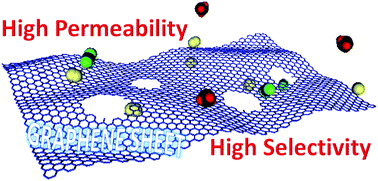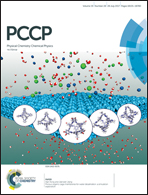Extremely permeable porous graphene with high H2/CO2 separation ability achieved by graphene surface rejection†
Abstract
Fabrication of a graphene separation sheet is difficult because of the necessity for leakage-free graphene transfer onto a substrate. In this study, porous graphene sheets with thicknesses of one, two, and four layers were directly fabricated on stainless-steel mesh substrates and demonstrated to display high separation ability for H2, CO2, and CH4. The single-layer graphene sample exhibited higher permeance for these molecules than double- and four-layer graphene and displayed similar high selectivity to that of other porous materials. Permeance was proportional to molecular velocity and inversely proportional to interaction strength with graphene; molecular size-dependent permeance was not seen. Molecules that interacted strongly with graphene were attracted to the graphene surface, which hindered permeation. Such graphene surface rejection allowed graphene containing larger pores than the molecular size to provide both high molecular permeance and selectivity. The relationship between the permeance of porous graphene for H2 and H2/CO2 with selectivity suggested that its permeance was higher than that of other materials with high separation performance. Therefore, the porous graphene samples separated molecules with extremely high permeance by graphene surface rejection.



 Please wait while we load your content...
Please wait while we load your content...